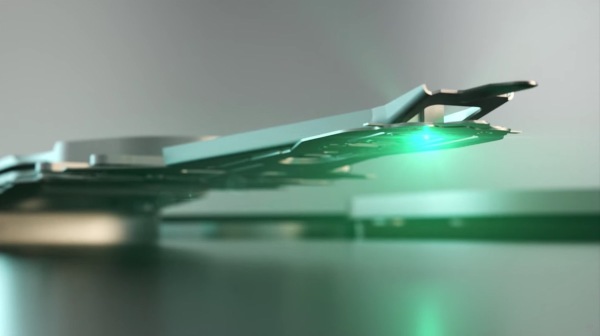Seagte wants to produce 3.5" hard disks with a storage capacity of 24 TB by 2020 using HAMR (Heat Assisted Magnetic Recording) technology. Each of the 8 platters (disks) that make up the hard disk should have a capacity of 3 TB each or a write density of 2.381 terabits per quadratzol - almost twice the previous maximum values. Seagte wants to have achieved densities of up to 10 terabits in tests - but these drives are still far from product maturity. According to Seagate's roadmap, the next target is 5 terabits by 2023, which would correspond to a storage capacity of 40 TB.
The  use of the new Multi Actuator technology will also double performance. In traditional HDDs, an actuator/actuator is used, a single motor that moves and positions all individual arms with their read and write heads together for all 8 discs/platters - with the disadvantage that only one head is always in action and reading or writing, the others are without work.
use of the new Multi Actuator technology will also double performance. In traditional HDDs, an actuator/actuator is used, a single motor that moves and positions all individual arms with their read and write heads together for all 8 discs/platters - with the disadvantage that only one head is always in action and reading or writing, the others are without work.

The new technology allows two actuators to perform independent actions simultaneously, doubling IOPS or data transfer rate (and improving average access time) without compromising capacity.
Two actuators each move half of all arms and heads for half of the platters. Since the performance of the hard disk can easily be increased linearly by parallel reading and writing, Seagte plans even more actuators in the future - with the ultimate goal of one actuator for each platter resulting in eight times the performance. First the reading speed is to be improved from 250 MB/s to 480 MB/s.
When writing using HAMR, the position to be written is briefly heated to approx. 450° by means of a laser. To withstand this heat, glass-ceramic plates are used instead of the usual aluminum alloy. However, no hard disk with this new writing technology is officially on the market yet - but HAMR HDDs have already been delivered to special major customers.

